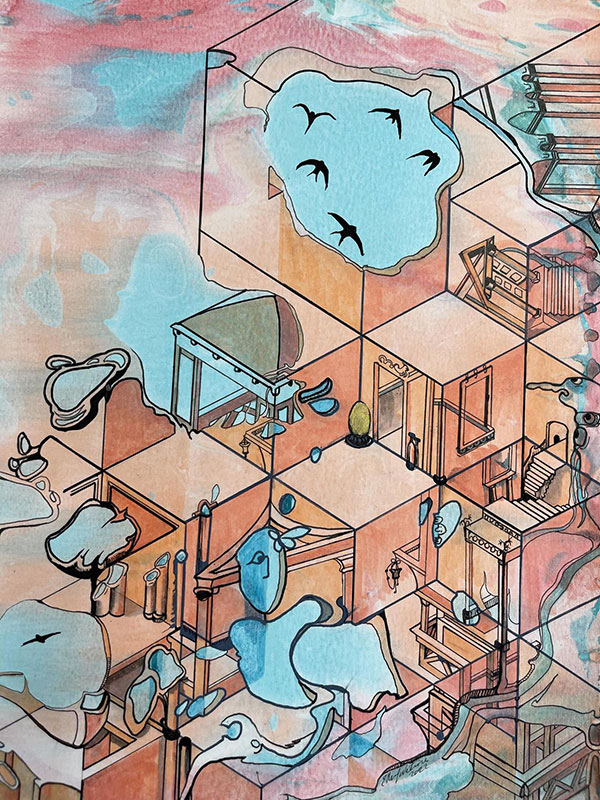At first, Ellen Wetmore thought it must have been a mistake. It wasn’t.
Wetmore, a professor of art and design at UMass Lowell, was named a 2023 Pollock-Krasner Foundation grant awardee in recognition of her ongoing work in drawing and painting.
“For me, this is one of those ‘you’ve arrived’ awards. It’s international and generous and well recognized,” she said. “Grant funders in art tend to stack on success rather than take the risk of granting to a relative unknown. With this recognition, I’ll be taken more seriously at a national level.”
The foundation was established by lifelong artists Jackson Pollock and Lee Krasner. While both became household names in the mid-20th century, according to the foundation, Pollock and Krasner launched their career during the financially tumultuous Great Depression and understood the importance of investing in the arts. Both would later take advantage of artistic opportunities through the New Deal and find footholds in painting and other media.
Reflecting on their early starts, according to the foundation, Pollock and Krasner meant for foundation grants to enable both emerging and established artists to devote time, resources and energy to their ongoing practice. The gift can be applied to inspiration-making endeavors such as attending a residency or to facilitating an upcoming exhibit or even to purchasing supplies and creating new work. Since 1985, the Pollock-Krasner Foundation has awarded more than 5,000 grants totaling more than $87 million.
“My first impulse is to travel,” said Wetmore, whose grant totals $20,000.
Wetmore, who currently serves as department chair, took part in a recent UMass Lowell study abroad program to Rome where she was inspired by the centuries-old architecture in the historic city.
“Old buildings erupt from under new buildings and it’s exciting to see what happens when the fragments fold together,” she said. “I’m also hoping to dig into Roman era paintings, because those interpreted space with multiple mathematic perspectives, rather than one or two as we do computationally.”
Wetmore, who has a long history in video exhibitions, slowly made a shift to drawing and painting over the past few years. Much of the work considered by the foundation when they selected Wetmore for the prize was completed while the professor was on sabbatical over the fall 2020 semester. She noted, “The work I do is often the result of stream of consciousness expression. I would not have been able to dive as deeply into line, color, composition, form, and subject matter without the focused time.”

